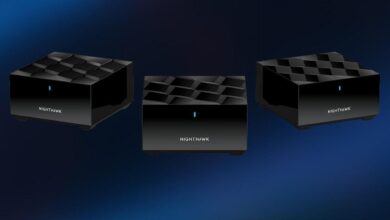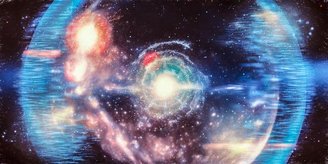James Webb captures the stunning brightness of a 'star factory'

Recently, the James Webb Space Telescope (JWST) collected data from a galaxy neighboring the Milky Way and revealed a stunning 'star factory' filled with interstellar atomic hydrogen. The cosmic object was photographed using data collected by the mid-infrared instrument (MIRI) and presents a visual spectacle full of colors.
The United States National Aeronautics and Space Administration (NASA) explains that the 'star factory' is located in the Large Magellanic Cloud (LMC), a dwarf galaxy that orbits the Milky Way. This is the nebula known as N79, a large star-forming complex with an extension of approximately 1,630 light-years — it is in the southwestern region of the LMC.
 In the image, it is possible to observe a newborn star amid the clouds of gas and dust represented by the color orange.Source: ESA / Webb / NASA / CSA / O. Nayak / M. Meixner
In the image, it is possible to observe a newborn star amid the clouds of gas and dust represented by the color orange.Source: ESA / Webb / NASA / CSA / O. Nayak / M. Meixner
The analysis of these results aims to help researchers learn more about the composition of the cosmic gas and dust clouds responsible for generating stars in the early universe. Scientists explain that the image is centered on one of three giant molecular cloud complexes, known as N79 South (S1).
“This nebula, known as N79, is a region of ionized interstellar atomic hydrogen, captured here by Webb's Mid-InfraRed Instrument (MIRI). N79 is typically considered a younger version of 30 Doradus (also known as the Tarantula Nebula), another of Webb's recent targets. The investigation suggests that N79 has had a star formation efficiency greater than 30 Doradus by a factor of two over the last 500,000 years,” NASA describes in an official publication.
Star Factory: N79
The image also reveals a distinct starburst pattern that features a series of diffraction spikes. Commonly, Patterns similar to these are detected around compact, extremely bright objects.
The researchers say these regions are interesting for studying the chemical compositions of star-forming environments that occurred when the universe was just a few million years old.
Say Cheese! A zoomed in section of this image processed with #DARKLight filters. pic.twitter.com/DGEvHXAJ6s
— Kelly Swanson (@kellysswanson) January 23, 2024
According to NASA, the new observations are part of a James Webb program that aims to study the evolution of the discs and circumstellar envelopes of stars forming in different regions. The telescope's instruments help scientists understand the vast range of masses at different evolutionary stages of these star-forming environments.
“Webb is now providing astronomers the opportunity to compare and contrast observations of star formation in N79 with the telescope's deep observations of distant galaxies in the early Universe. Webb's sensitivity will allow scientists to detect, for the first time, the dust disks that form planets around stars with a mass similar to our Sun, at the distance of the Large Magellanic Cloud”, NASA concludes.
Did you like the content? Always stay up to date with the latest astronomy discoveries here at TecMundo and take the opportunity to discover how colorful the images from the James Webb telescope are.





